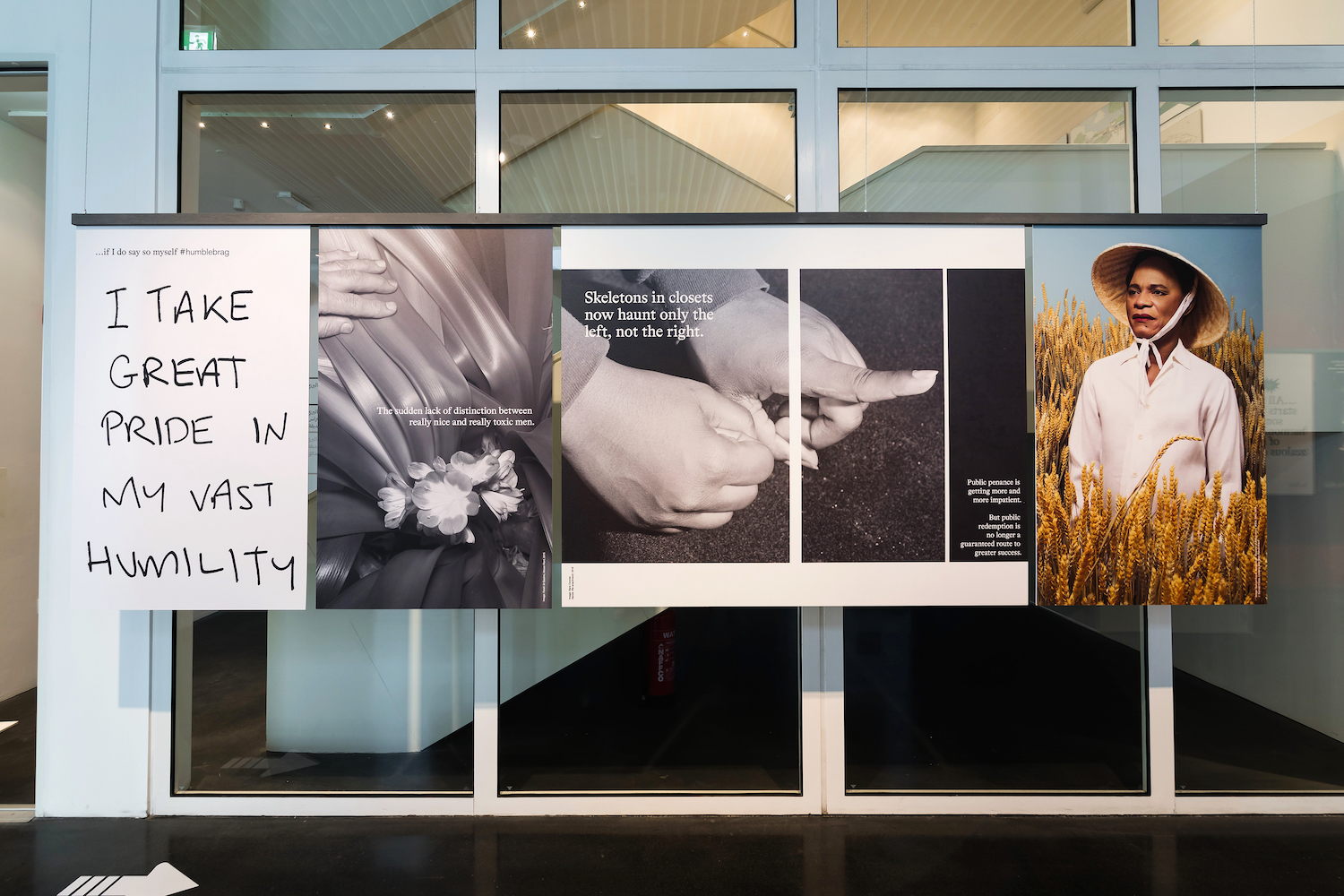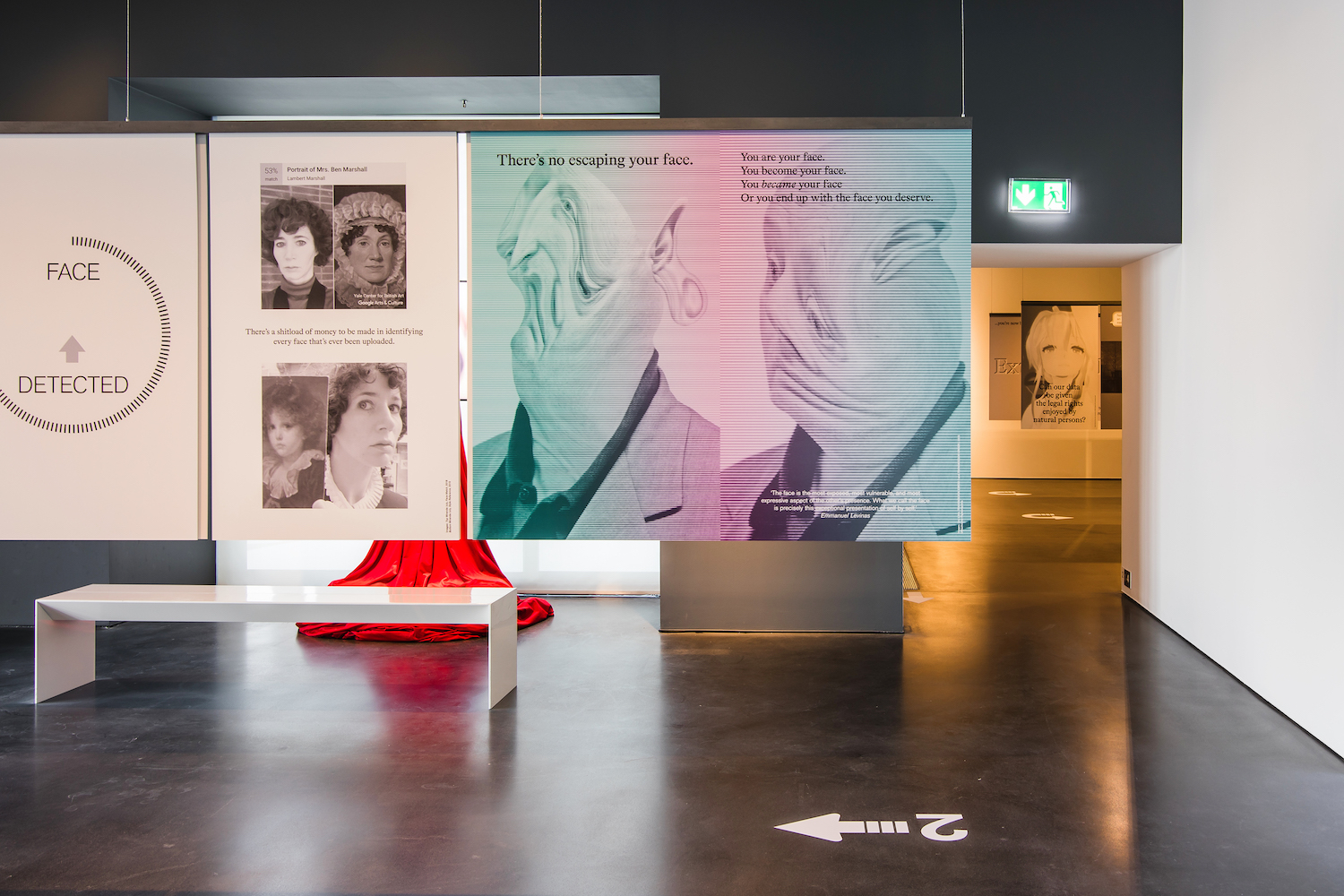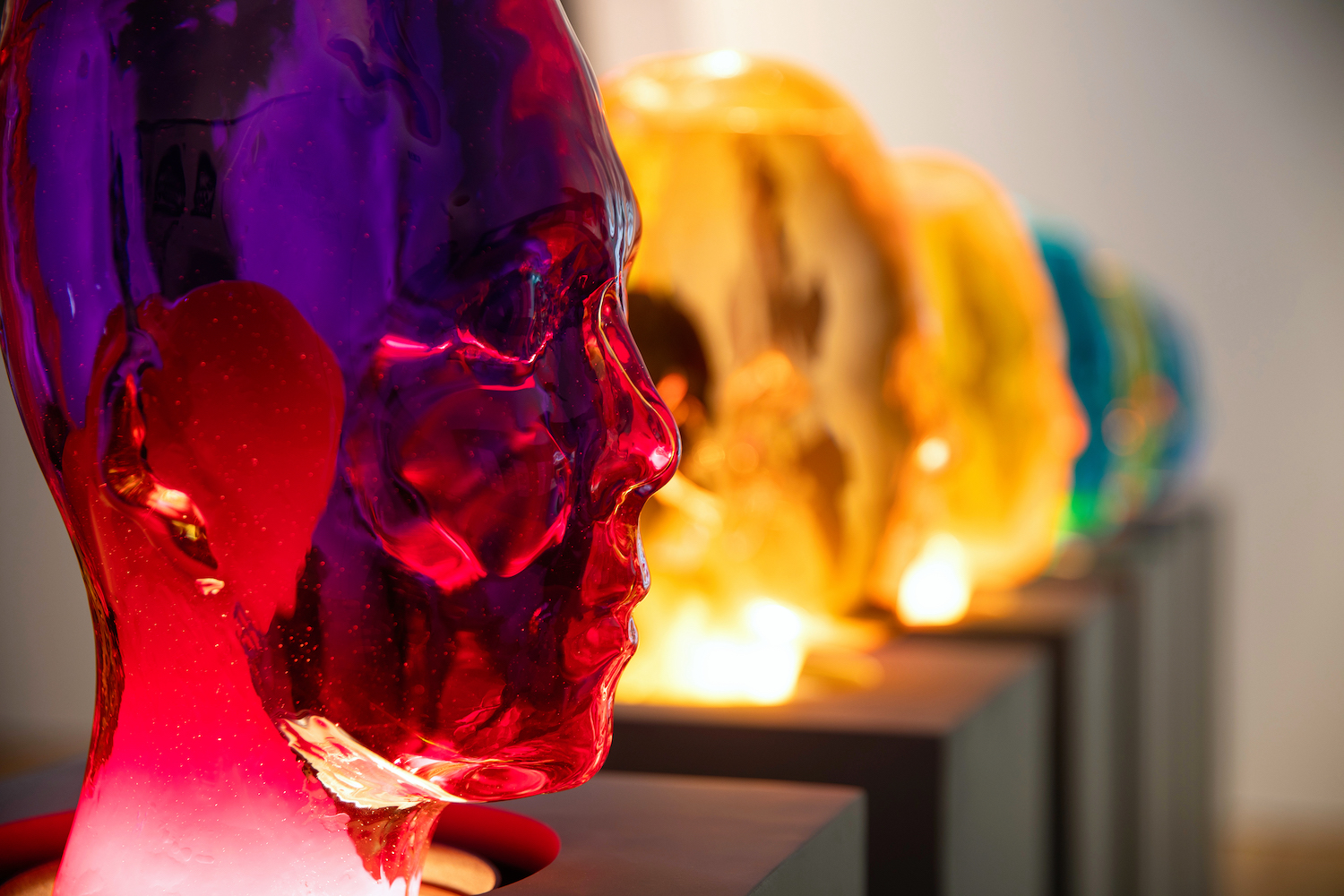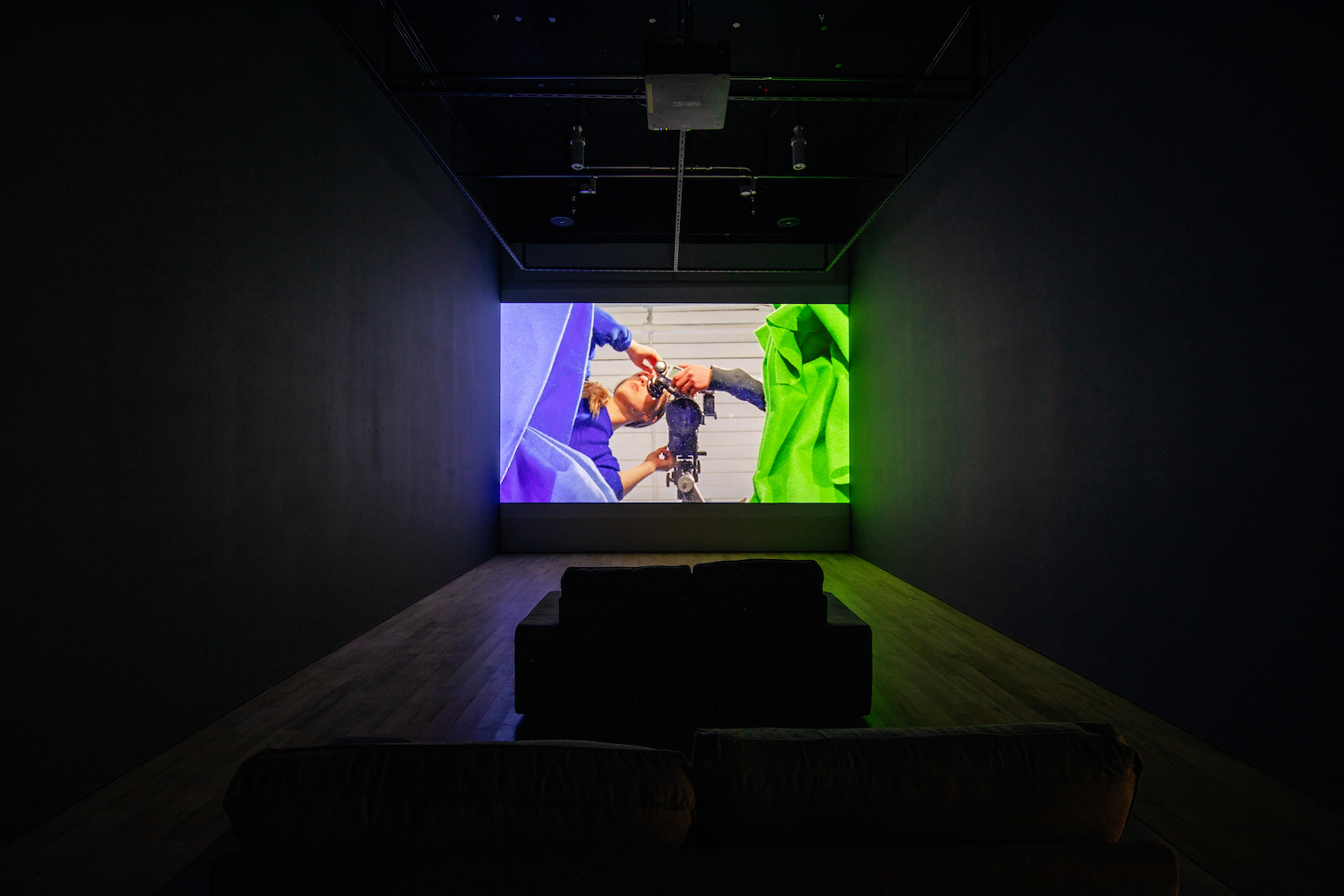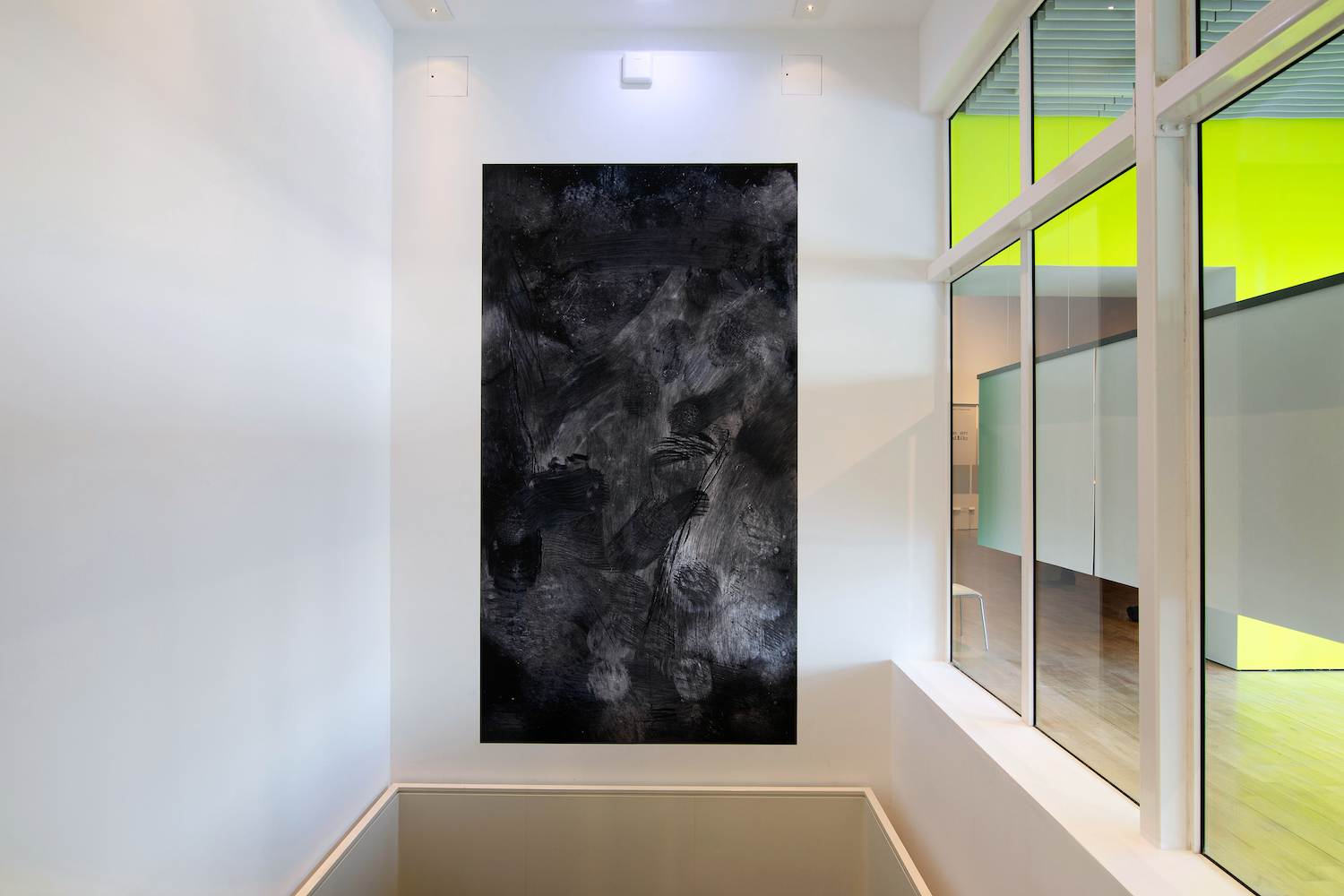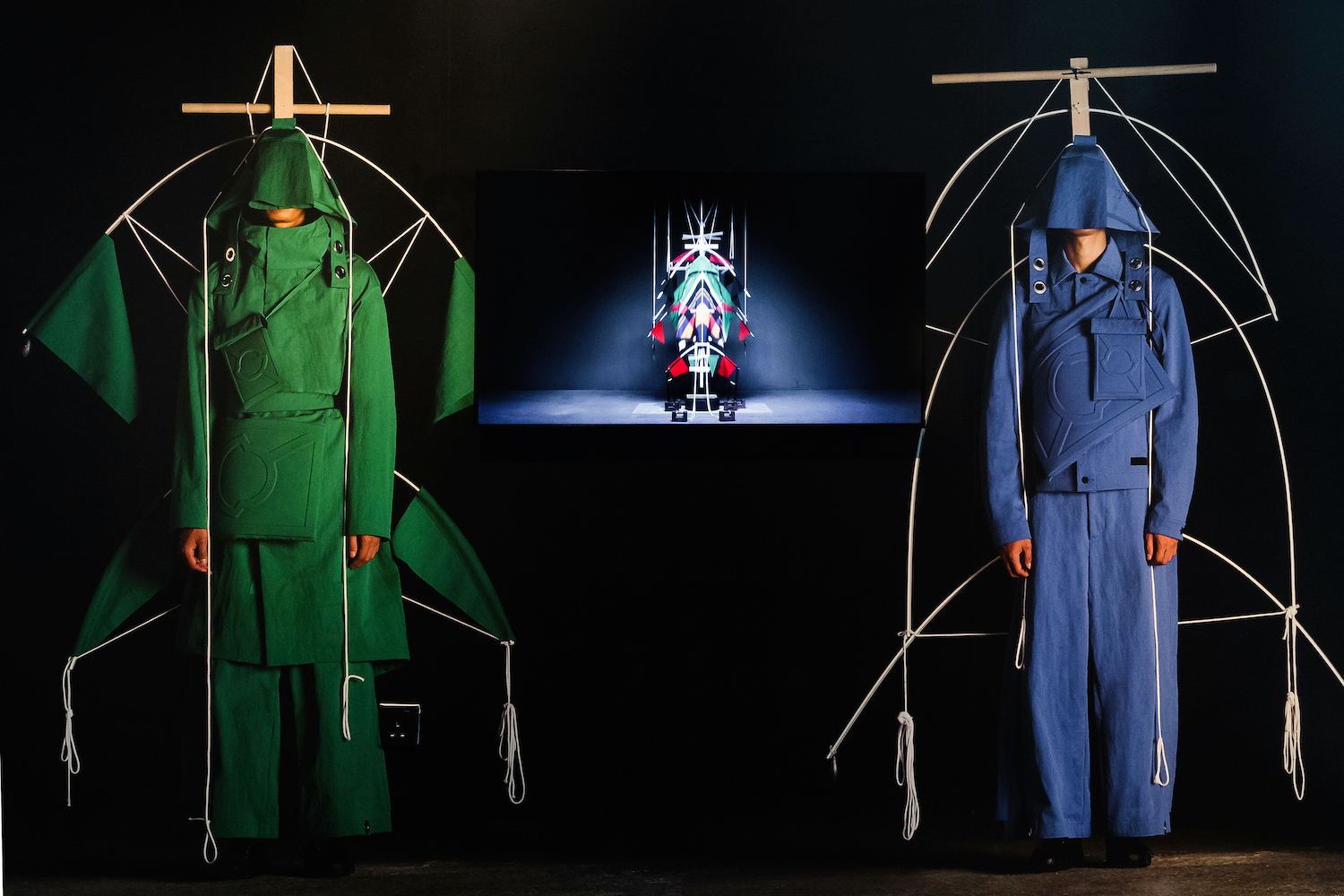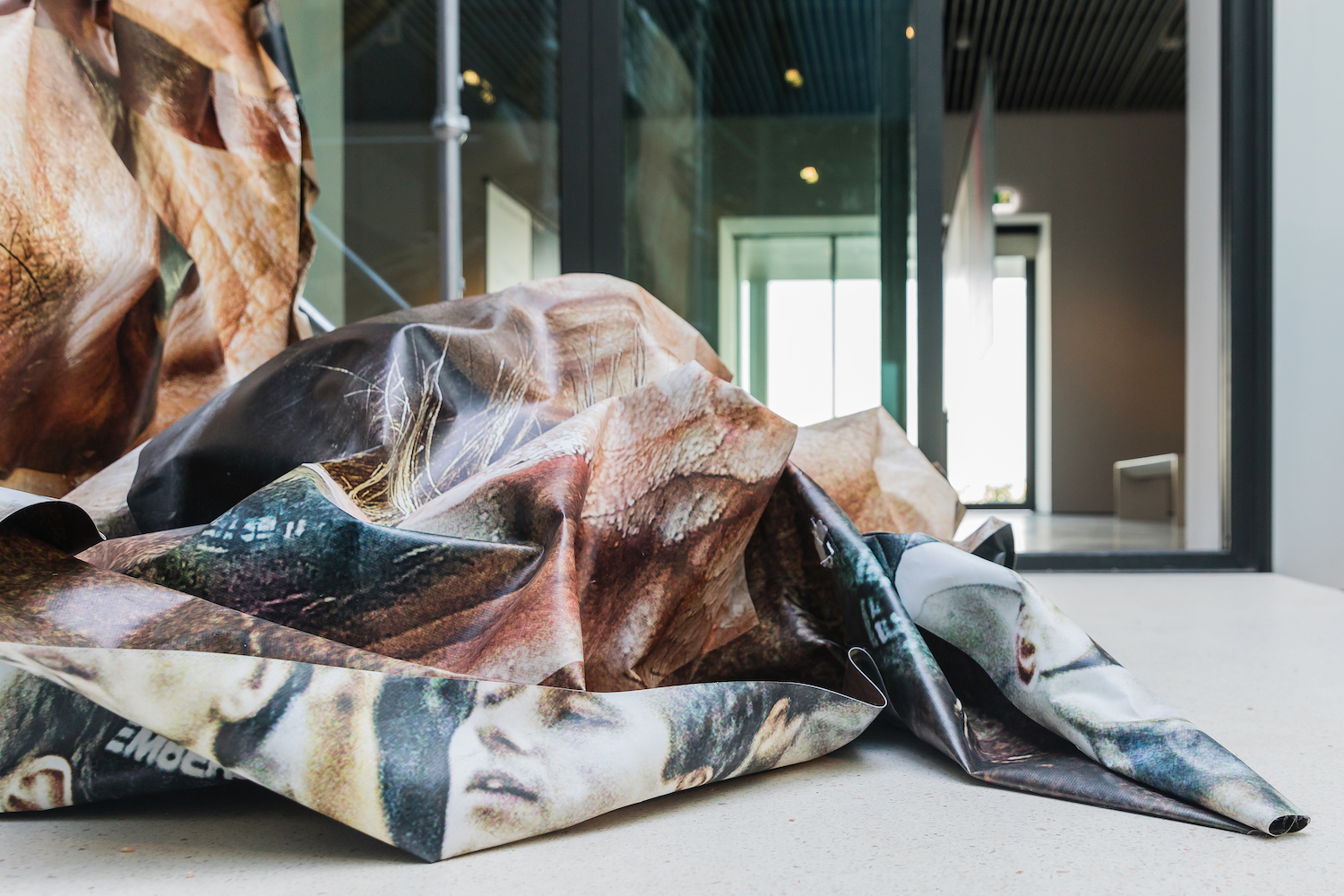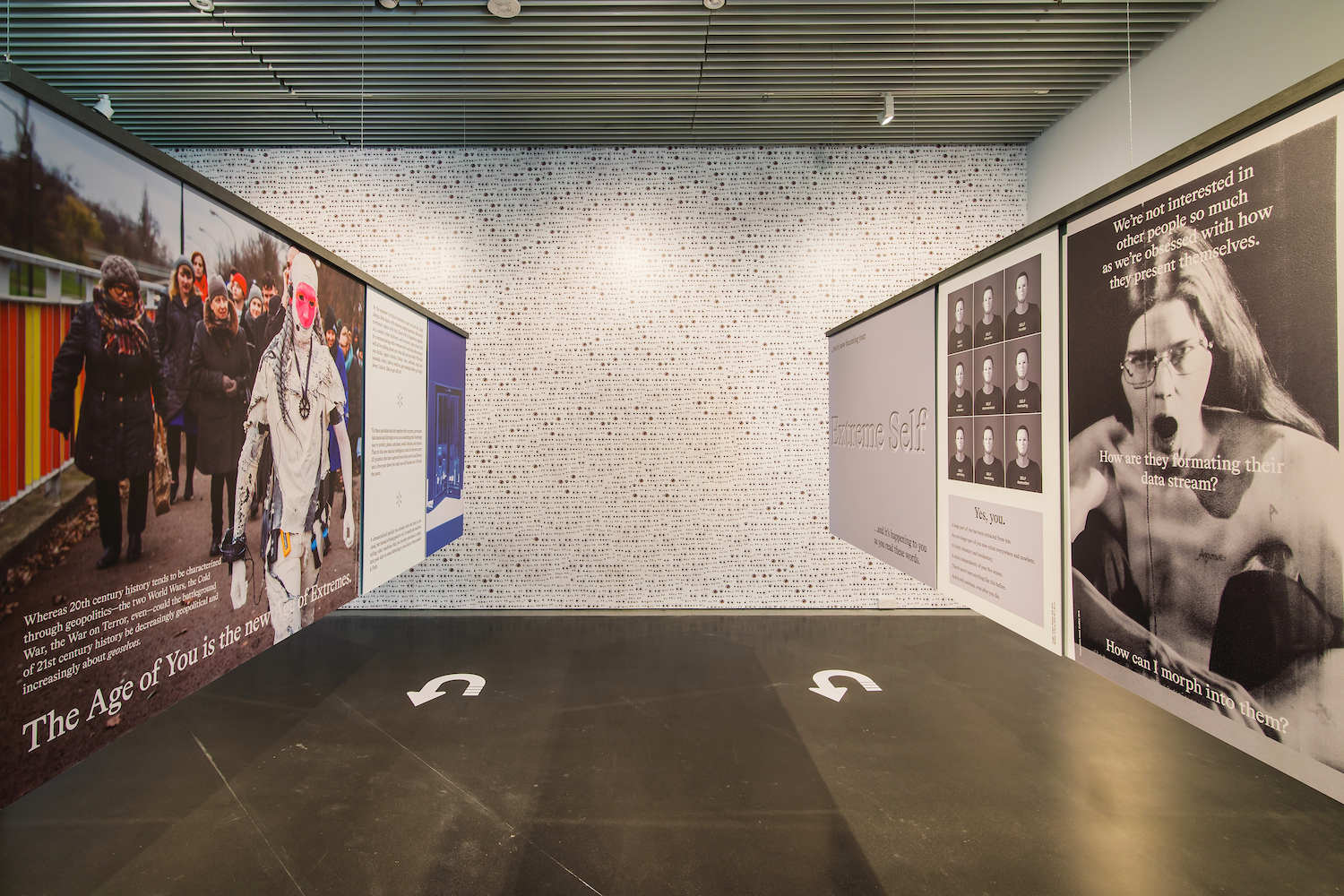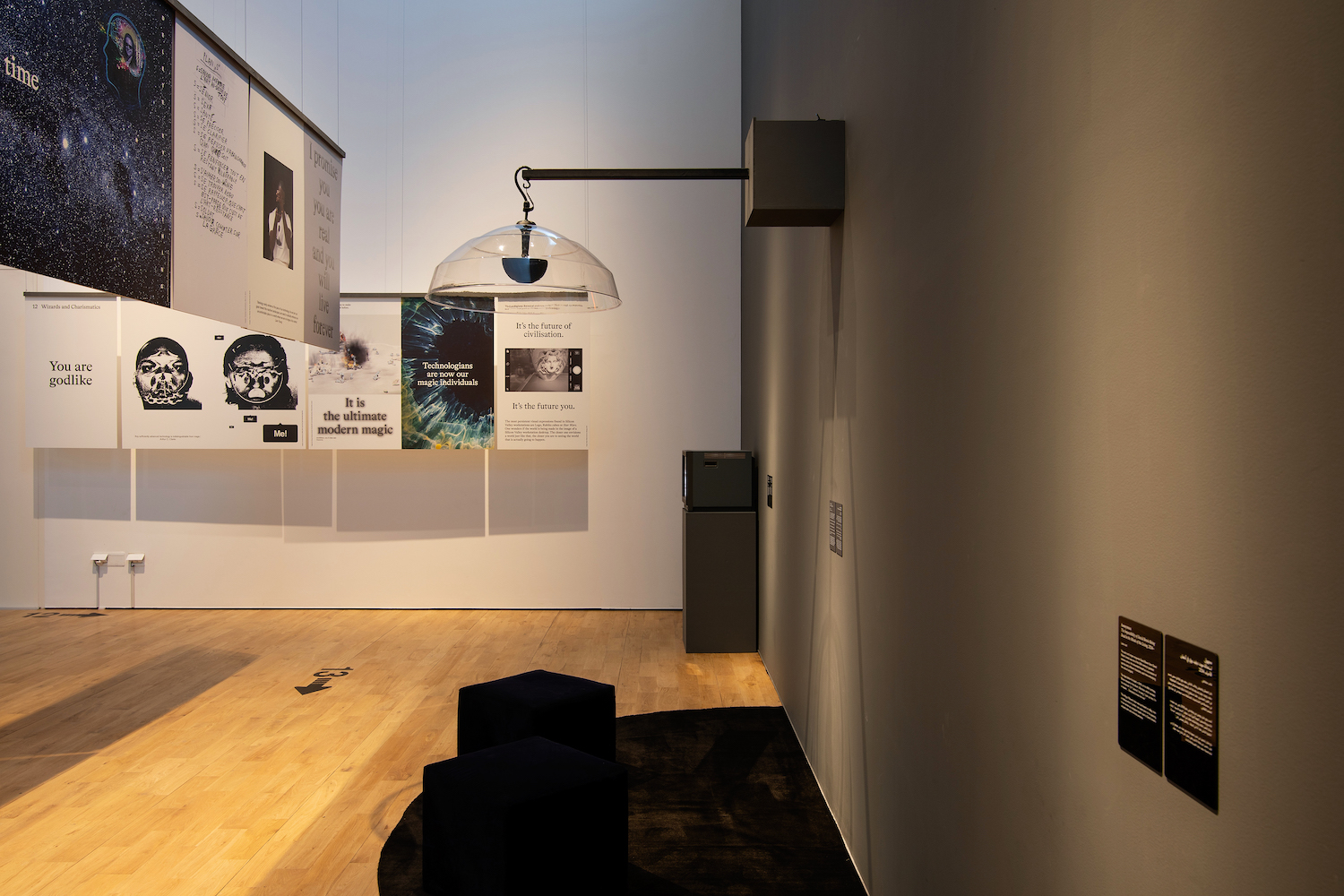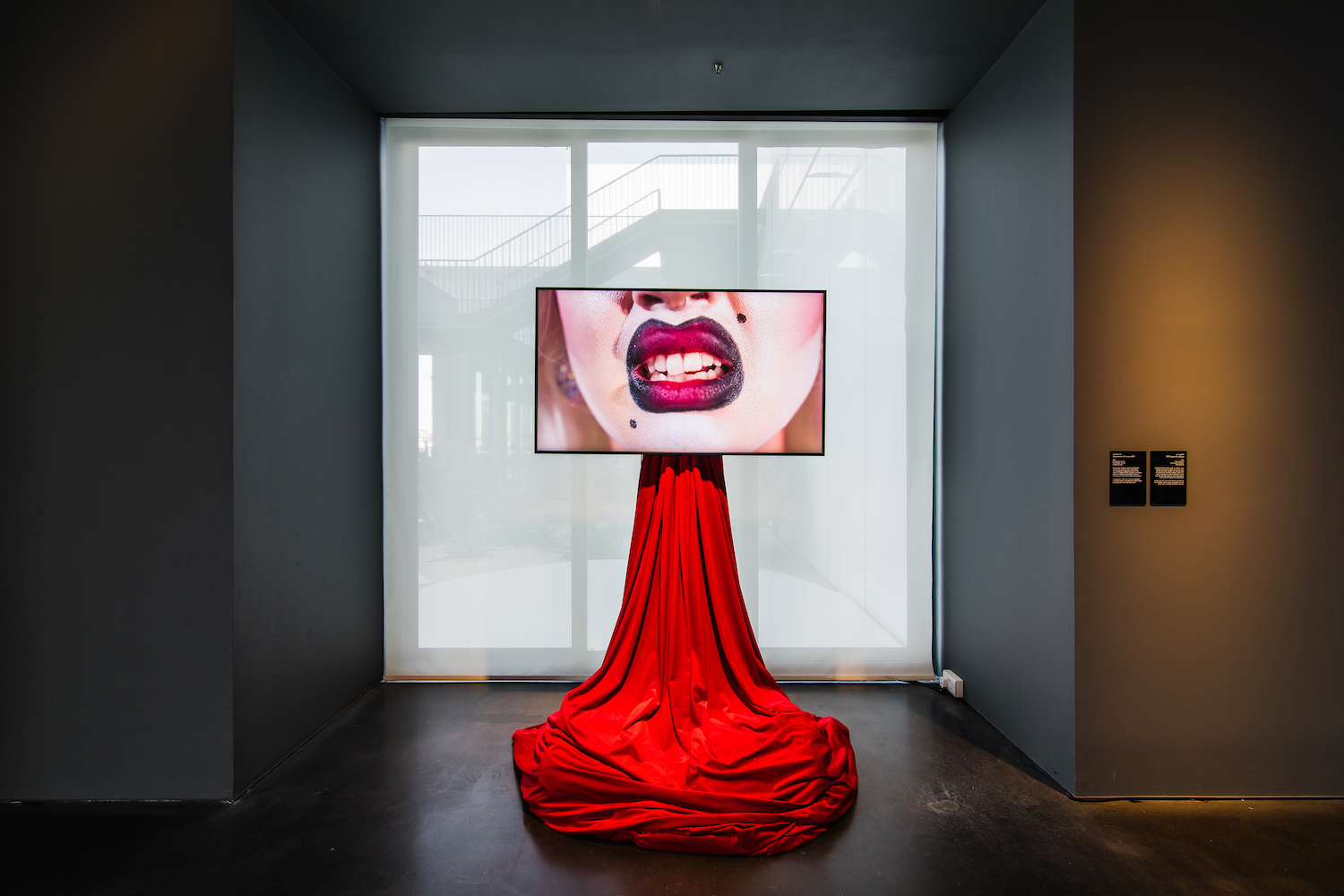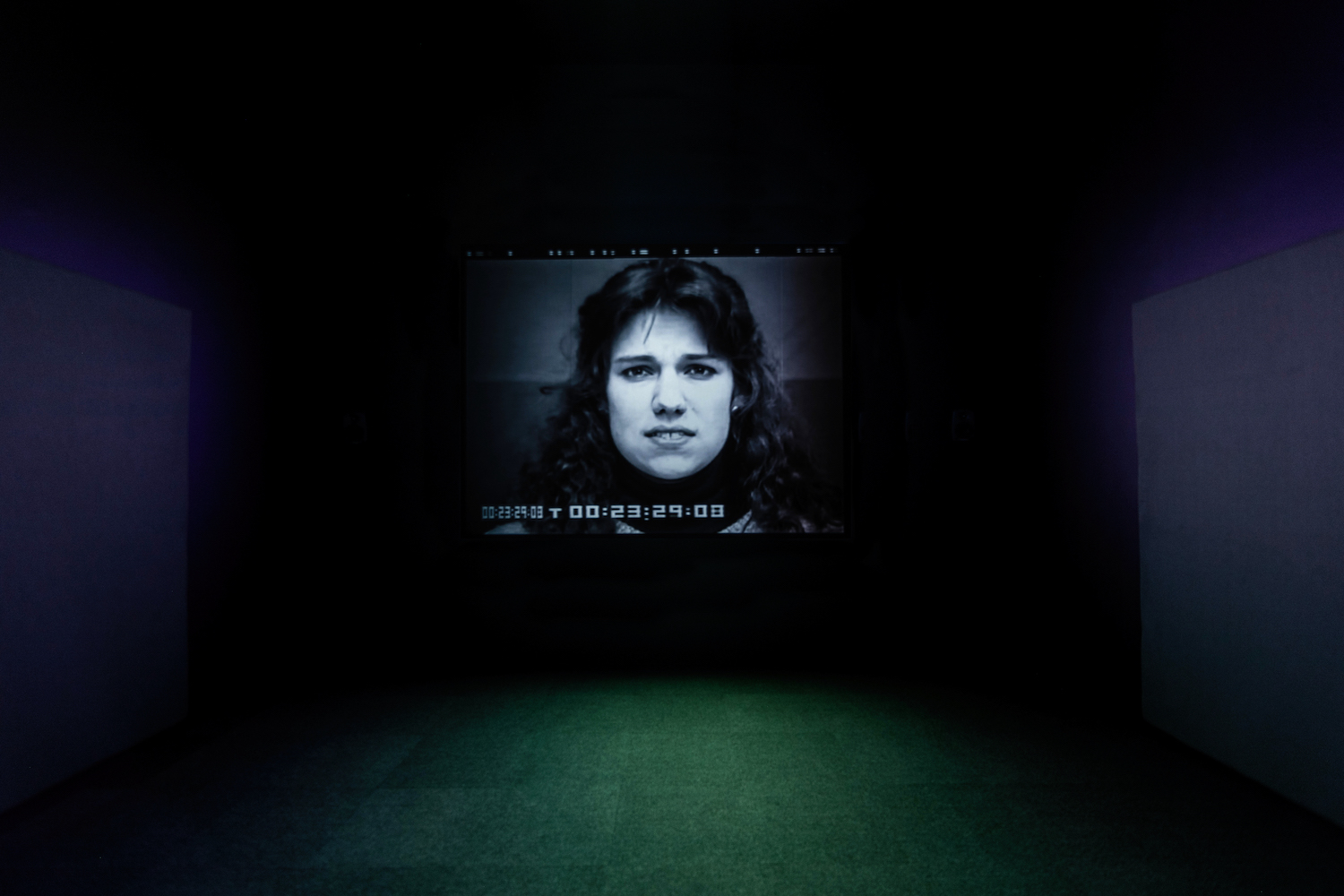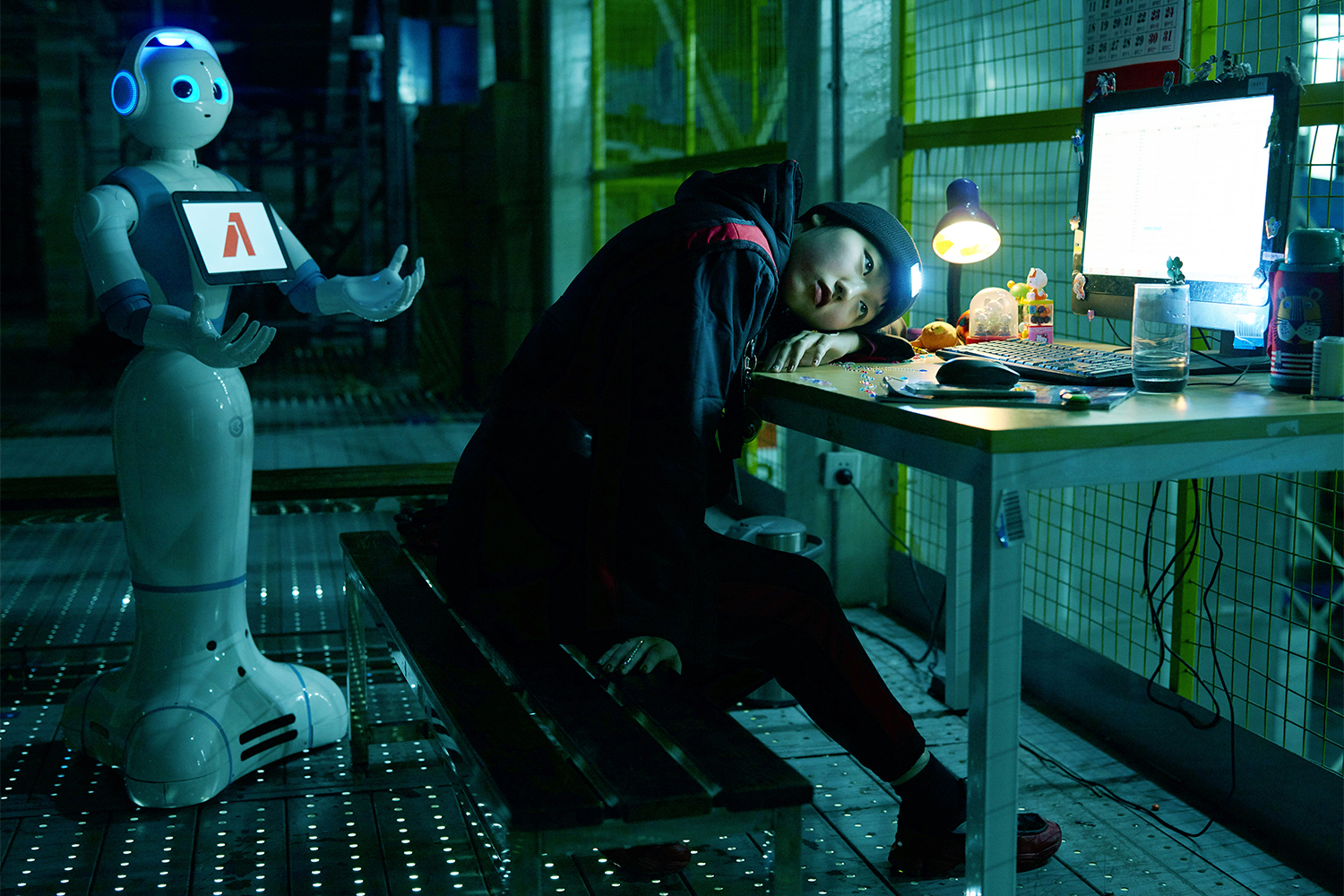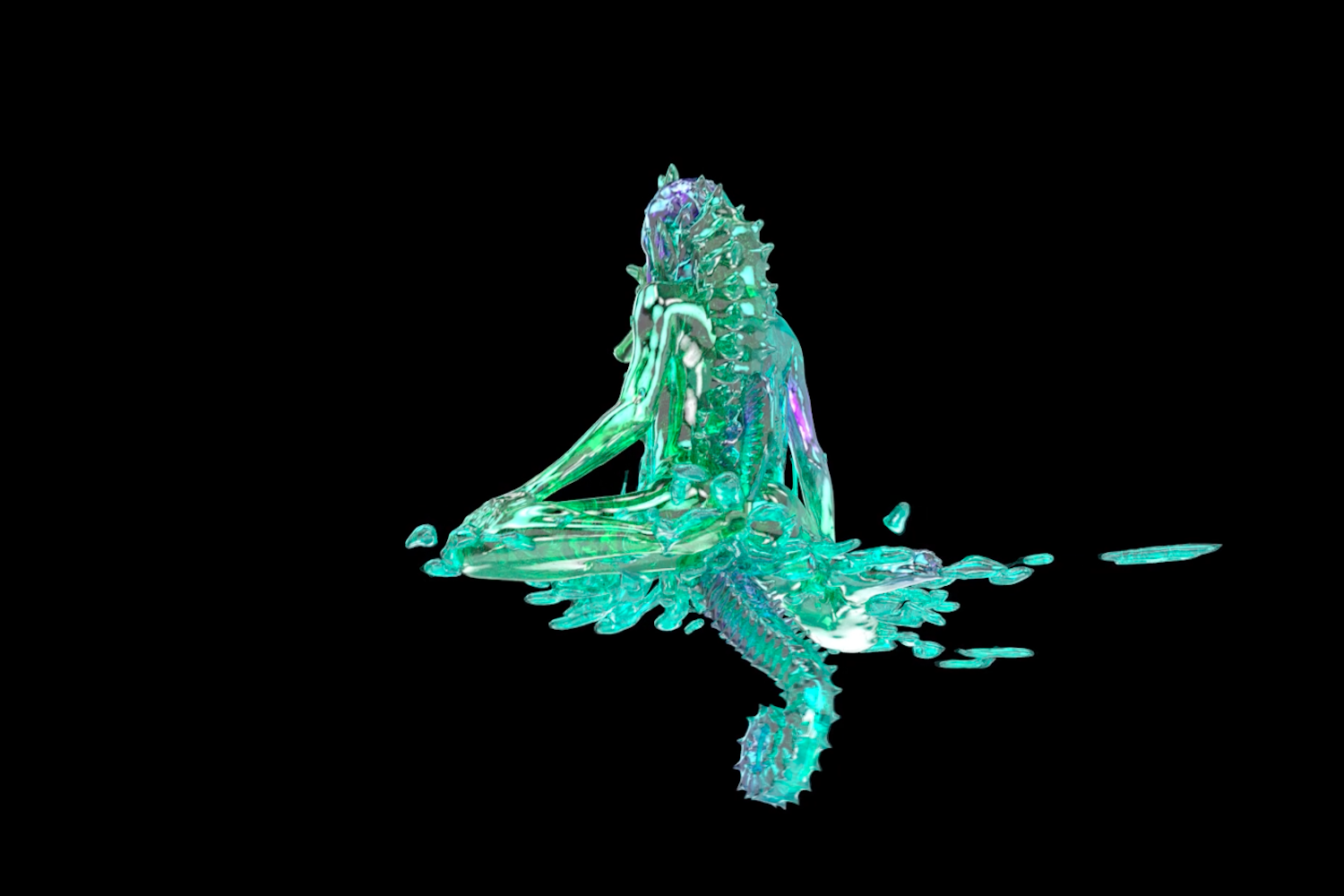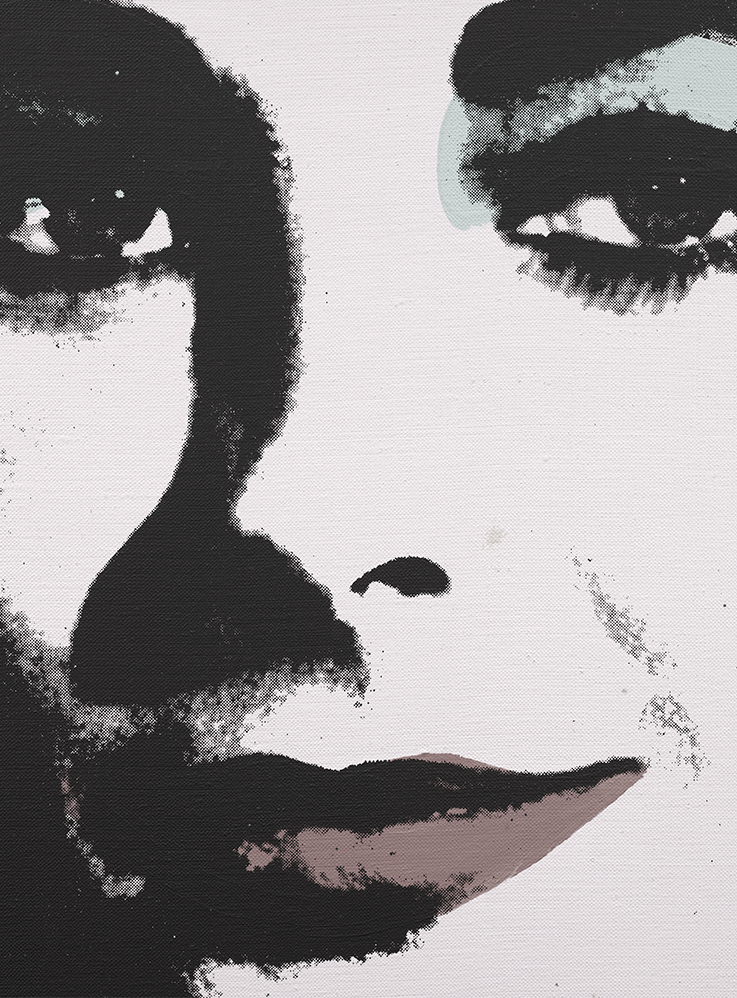The details of Victoria Sin’s Illocutionary Utterances (2018) — makeup-clogged pores, hairs poking out of nostrils, wet teeth pushing against exaggerated ombré lips — are somehow representative of the exhibition “Age of You.” The video’s elegiac voiceover deliberately does not match the aggressive lip-syncing depicted, thus echoing the duality of the works around it, with innocuous facades that also do not correspond to the quietly simmering violence present within. I’m surrounded by emojis and eyeball wallpaper, tiny caricatures of our collective human experience, and I am told that every single one of my emotions is, or already has been, for sale. I am not in control. Still, I am complicit.
The exhibition is an incarnation of The Extreme Self, a sequel (or expansion pack) to The Age of Earthquakes: A Guide to the Extreme Present by curators Shumon Basar, Douglas Coupland, and Hans Ulrich Obrist. Staged across two floors (and an elevator) at the Jameel Arts Centre, lush graphics are suspended like temple curtains and announce maxims in the form of statistics, headlines, thought pieces, and prophecies about the twenty-first-century individual. The illustrations and text are mined from more than seventy artistic, technological, and musical contributions, yet the signature packaging makes it all seem to be the work of the curatorial trio alone.
Arrows and numbers on the floor guide the viewer through thirteen chapters. I think about going rogue, but, like an Ikea floor plan, it makes little sense to do so. The images are laid out like the spread of a book before binding (and after being treated like a blow-up doll), and I don’t find it disagreeable. A friend likens the “guided pathway” to the endless scroll of a web browser, which makes sense.
The exhibition hints at being democratic with fear and rage; it’s successful with the former, lax with the latter. I pause at a Simon Denny image (Davos 2019: Amazon Web Services Swiss Alp Fantasy, 2019) emblazoned with the text MY PRIVATE JET IS ABOUT TO LEAVE WITHOUT ME ¯\_(ツ)_/¯ and I think of this week’s headline: “Rich Indians Flee by Private Jet as Virus Infections Spiral” (Bloomberg). The works seem to deliberately evoke the things in the outside world I most distrust: iPhones, wealth, selfies, advertising, the Western world’s attempts to homogenize conversations around dictatorship and democracy. Sincere critique of authority falls short, and is perhaps the exhibition’s weakest link.
Yet, for all its fast-tracked futuristic energy, there are undercurrents of something primeval that I enjoy. First, an offering: Craig Green’s video installation of his fashion collaboration with Moncler Genius (2018) — totemic costumes, notional and evocative of a disguised alien life form that co-exists quietly among us. I don’t connect my highly speculative chain of thought to the show immediately, but, further in, references from iconic world-builders like Isaac Asimov, Arthur C. Clarke, and Ursula K. Le Guinn crop up, and I have the sense that under all the hysteria of losing ourselves, or being stolen, the show harbors mysterious homing beacons to aspirational safe spaces.
I’m constantly aware that I may not be asking the right questions or reading the exhibition accurately. As thousands of computer-generated “familiar” faces rapidly melt into each other in NVIDIA’s One Hour of Imaginary Celebrities (2017), I can’t help but think of jinns and their ability to manifest in human form. Do they inhabit a known face, or do they use their own algorithm? Is an AI a mechanical jinn?
In the stairwell, a vinyl print presents the larger-than-life greasy thumbprints and cheek sebum of Stéphanie Saadé’s phone screen (Digiprint, 2019); outside, Satoshi Fujiwara’s photo installation (Crowd Landscape, 2021) is a piled heap of eyes, teeth, and flesh, all gently stirring in the hot Dubai air. The exhibition is quite obviously more than musings, designs, sighs, and songs; it is a wiki of erasure, distortion, and amalgamation, enabled by data and surveillance capitalism. But also, it exists entirely within the hegemonic truth of a promised book, which, as such things go, cannot be a voice for all. I sympathize with a fake Bob Dylan as he softly croons a Britney Spears tune (Vocal Synthesis, Audio Deepfakes, 2020–22), “My loneliness is killing me…”


